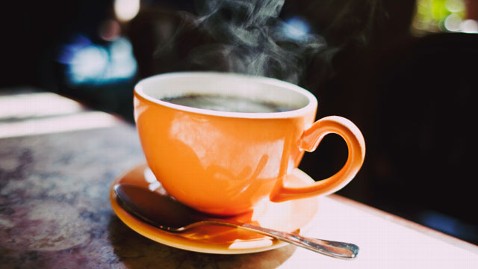5 Worst Mistakes to Avoid When Making Your Morning Coffee

(Image credit: Getty Images)
Think your coffee is up to snuff? Chances are you're guilty of one of these common mistakes when you make your morning brew. Major Cohen, an 18-year coffee expert and senior project manager in coffee engagement at Starbucks, knows how to make a cup.
"If you approach coffee as if you were a master chef or a master scientist, you can almost never go wrong," says Cohen.
For top precision and accuracy, he measures the coffee beans and water in his morning cup with a gram scale.
If you're not a coffee expert, here some top mistakes and ways to fix your morning brew.
1. Using tap or u nfiltered water . A cup of coffee contains 98 percent water. "You have to be the judge of your tap water," says Cohen. If your tap water tastes gross, chances are your coffee will taste just as terrible. Cold, filtered water is your best bet.
Check the water temperature, too.
"If you don't have hot water, it's not going to extract the right flavors when you brew it," he says.
Cohen suggests using a thermometer if the coffee seems weak and all the other factors have been eliminated. At Starbucks stores, coffee is brewed at 205 degrees Fahrenheit and is a slightly cooler 175 degrees when it's served to customers.
2. Storing coffee beans in the freezer. Coffee should be stored in a cool, dry place and away from the moisture of the freezer.
"As you take it in and out, moisture will condense on it and get wet," he says.
Coffee storage should focus on preventing light, heat, air and moisture.
"Would you put fresh fish in the freezer? You never expect it to taste the same," Cohen says, "It's going to be detrimental to the products."
3. Not using enough coffee per cup. If you're eyeballing coffee quantities, you're probably under-estimating. Most people use a drastically lower amount of coffee per cup than is required.
"They do that either because they're trying to be frugal or, in our day and age, trying to stretch their resources as much as they can," he says.
The result is a bitter and watery cup. Using two rounded tablespoons per six ounces of water is generally the rule of thumb for coffee making.
If you like a weaker cup of coffee, Cohen says, it tastes better if you add hot water to it than if you brew it with less beans.
"If people are trying to explore levels of intensity of taste, it's good to experiment with roast," he says.
Trying different roasts, from blonde to dark, is a good way to see what flavor you like the best.
4. Using the wrong grind . From French press to espresso machine, different machines require a different grind.
"The wrong grind is either going to hold the water back too much if its too fine, or its going to let the water run much too quickly," he says.
Your best bet is to follow the instructions that come with the machine. A helpful tip is to think of common household items before you grind the beans. A coffee press requires a coarse grind, which resembles kosher salt. Espresso grinds look like powdered sugar and a fine grind is the texture of granulated sugar. A medium grind would be medium ground cornmeal.
5. Using too much coffee. If you think using more coffee beans in the morning is your best bet, you're wrong. Using too many grounds results in under-extraction and less-than-ideal flavor.
"It does make a stronger cup, but it gets very, very bitter because the solid level will go up to 30 percent," Cohen says. "Imagine if you were making bread and you used too much yeast. The bread is going to rise too much. … The bread is going to be an abysmal failure."